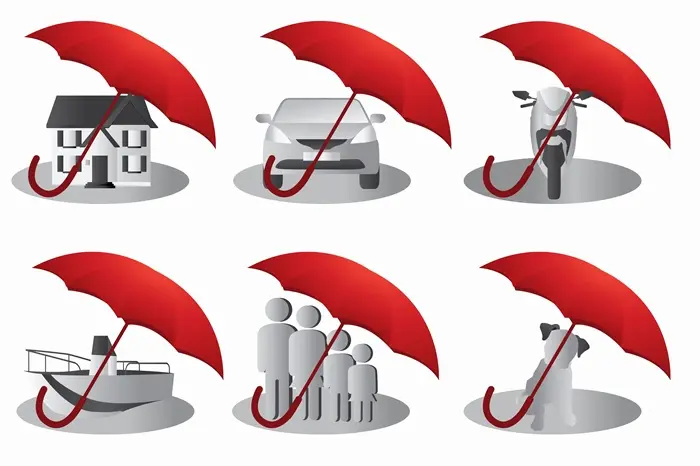In today’s digital age, building a Forex website can be a lucrative business venture, especially in light of the growing demand for online trading platforms. A Forex website can serve as a hub for traders to access information such as real-time market data, trading tools, educational content, and more. However, building a successful Forex website requires a blend of technical knowledge, user experience design, and content strategy. This article will explore the basic steps and key elements required to build a professional and profitable Forex website.
Understanding the Forex Market and Its Audience
Before diving into the technical aspects of creating a Forex website, it is crucial to understand the market and your target audience. The Forex market is a global financial market where currencies are traded. Forex trading is complex and risky. Traders, investors, and enthusiasts alike rely on websites to gather information and tools to help them navigate the market.
Your audience will be made up of traders of varying experience levels. Some are beginners seeking educational resources, while others are experienced traders seeking advanced analysis and tools. Understanding these different user needs will guide the design and functionality of your website.
Planning Your Forex Website Structure
A well-structured Forex website is essential for providing a seamless user experience. Here are some of the key sections you should include:
1. Homepage
The homepage is the first impression users will have of your website. It should clearly communicate your website’s value proposition. Include essential elements such as:
A clean and simple layout
A prominent call-to-action (CTA)
Brief descriptions of key services (e.g., market analysis, trading tools)
A live feed of real-time market data
2. Trading Tools and Platforms
Forex traders need access to reliable trading tools. Include essential tools such as:
Live charts with real-time price updates
Currency converters
Risk management calculators
Economic calendars for market events
Trading signals and alerts
3. Educational Resources
Offering educational content will attract beginners and help build trust with your audience. Include sections such as:
Beginner guides on Forex trading
Articles and tutorials on trading strategies
Videos explaining Forex terms and concepts
Webinars with expert traders
4. Account Registration and Login
For users who want to trade or access premium features, you need an account registration system. This section should be secure and straightforward. Include:
A registration form for new users
Login details for existing users
A secure password recovery option
5. News and Market Updates
Traders need up-to-date information to make informed decisions. A Forex website should include a news section that provides:
Global economic news and events affecting currency prices
Analysis of major Forex pairs
Expert commentary on market trends
Choosing the Right Technology for Your Forex Website
Choosing the right technology is critical to the success of your Forex website. This includes both back-end and front-end technologies.
1. Content Management System (CMS)
A CMS makes it easy to manage your website’s content. Popular CMS platforms such as WordPress and Joomla are great for Forex websites. They offer easy-to-use interfaces, customizable themes, and a wealth of plugins to add functionality to your website.
2. Website Hosting
Forex websites require fast and reliable hosting services to ensure uptime and performance, especially when real-time data and trading tools are critical. Choose a hosting provider that offers:
High uptime guarantees (99.9% or more)
Fast loading times for trading tools
Scalability to handle high traffic during peak market hours
Enhanced security features
3. Responsive Web Design
More and more users are accessing Forex websites via mobile devices. Responsive design ensures that your website can adapt to different screen sizes. Make sure your website looks and works smoothly on desktop computers, tablets, and smartphones.
4. Secure Payment Gateway Integration
For users who wish to fund their trading accounts or purchase premium services, you need a secure payment gateway. Choose PayPal, Stripe, or other reliable payment platforms that meet international security standards.
5. Real-time Data Integration
To provide accurate and timely data to forex traders, integrate real-time market information. This can be achieved through APIs that provide real-time currency price updates, news, and other financial data.
Build a Secure Forex Website
Due to the sensitive nature of financial transactions, security is a top priority for forex websites. Implement the following security measures:
1. SSL Encryption
Install an SSL certificate to encrypt data between the user’s browser and your website. This ensures that sensitive information such as login credentials and payment details are secure.
2. Two-Factor Authentication (2FA)
Adding two-factor authentication (2FA) increases the security of users accessing their accounts. This requires users to enter a verification code sent to their mobile device or email in addition to their password.
3. Regular Security Audits
Perform regular security audits to identify vulnerabilities in your website. Securing your website prevents cyberattacks and protects you and your users.
4. Privacy Policy and Terms of Use
Make sure your website has a clear and transparent privacy policy and terms of use. This builds trust and ensures compliance with data protection laws.
Optimizing User Experience for Forex Traders
User experience (UX) is crucial to ensuring visitors stay engaged with your website. A smooth and intuitive design will keep traders coming back for more. Here’s how to optimize the UX of your Forex website:
1. Easy Navigation
Make sure your website is easy to navigate using clear menus and tabs. Avoid clutter and make it easy for users to find important sections, such as trading tools, educational content, and account management.
2. Fast Loading Speed
Speed is critical for Forex websites, especially for live trading tools. Optimize images, scripts, and stylesheets to reduce page load times. A fast website can improve user satisfaction and attract more traffic.
3. Customizable Dashboard
Allow users to customize the dashboard to their preferences. This can include selecting the most commonly used trading tools or adjusting the layout of charts and data feeds.
4. Interactive Features
Consider adding interactive elements such as margin calculators, pip value calculators, and position size calculators. These tools can help traders make more informed decisions and increase engagement.
Marketing and Promotion of Forex Websites
Establishing a Forex website is just the first step. To attract traders and increase website traffic, you need to have a sound marketing strategy in place. Here are some proven ways to promote your Forex website:
1. Search Engine Optimization (SEO)
SEO is essential to ensure that your website ranks high on the search engine results page (SERP). Focus on optimizing:
On-page SEO (keywords, meta tags, content)
Off-site SEO (backlinks, social media mentions)
Technical SEO (site speed, mobile optimization)
2. Content Marketing
Publishing valuable and informative content can help attract organic traffic. Update your blog regularly with articles on Forex strategies, market analysis, and trading tips.
3. Social Media Marketing
Use social media platforms such as Twitter, Facebook, and Instagram to engage with potential traders. Share market updates, trading insights, and promotions to attract loyal fans.
4. Affiliate Marketing
Affiliate marketing can help you earn commissions by partnering with merchants or influencers who promote your website. Provide them with tracking links and promotional materials to drive traffic and sales.
5. Paid Advertising
Run paid advertising through platforms such as Google Ads or Facebook Ads. This will help you quickly reach a wider audience, especially in the early stages of building a website.
Maintaining Your Forex Website
Once your Forex website is live, regular maintenance is essential to ensure it runs smoothly. Here are the things you need to take care of:
1. Regular Content Updates
Update your content regularly to keep it relevant and engaging. This includes adding new educational articles, updating market analysis, and providing new tools for traders.
2. Software and Plugin Updates
Make sure all software and plugins are kept up to date. This helps prevent security vulnerabilities and improves website performance.
3. Customer Support
Provide efficient customer support to resolve any issues your users may have. Provide multiple contact options such as live chat, email, and phone support.
4. Performance Monitoring
Monitor your website’s performance, especially during peak market hours. Track analytics data and fix any issues that may negatively impact the user experience.
Conclusion
Building a Forex website requires careful planning, technical expertise, and a focus on providing value to your users. By understanding your audience, implementing the right technology, ensuring security, and providing valuable content, you can create a Forex website that meets the needs of traders and stands out in the competitive Forex market. With the right approach, your Forex website can become a trusted resource for traders around the world, driving traffic, engagement, and ultimately profitability.
Related topics:































